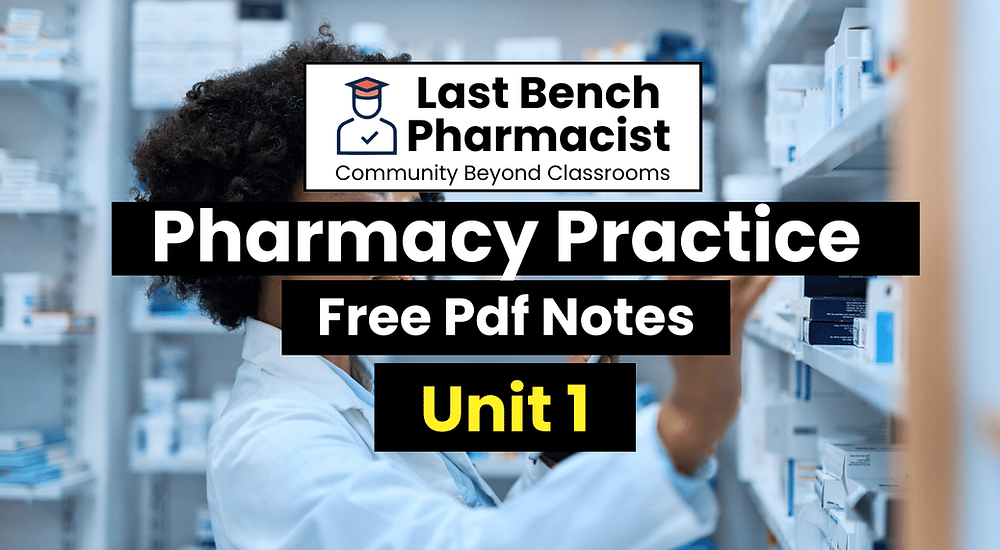



#bpharmnotes #bpharmPharmacypractice #bpharmpdfnotes
B-Pharmers, dive into the heart of healthcare with B Pharm Pharmacy Practice Unit 1 PDF Notes! Let’s explore hospitals, their types (primary, secondary, tertiary), and their organizational structures. Imagine understanding the roles of doctors, nurses, and pharmacists, working together for patient care. Buckle up as we delve into the fascinating world of hospital pharmacy, its functions, structure, and the crucial role pharmacists play in ensuring safe medication use. But it’s not just dispensing pills; we’ll also explore adverse drug reactions (ADRs), their classifications from allergic reactions to drug interactions. We’ll even learn how to detect and report ADRs, safeguarding patients. Finally, we’ll shift gears to community pharmacy, understanding how retail and wholesale pharmacies operate, their legal requirements, and how they dispense medications to the public. Remember, pharmacy practice is about more than just drugs; it’s about patient well-being, and this unit equips you to be a valuable contributor to healthcare!
a) Hospital and it’s organization
Definition, Classification of hospital- Primary, Secondary and Tertiary hospitals, Classification based on clinical and non- clinical basis, Organization Structure of a Hospital, and Medical staffs involved in the hospital and their functions.
b) Hospital pharmacy and its organization
Definition, functions of hospital pharmacy, Organization structure, Location, Layout and staff requirements, and Responsibilities and functions of hospital pharmacists.
c) Adverse drug reaction
Classifications – Excessive pharmacological effects, secondary pharmacological effects, idiosyncrasy, allergic drug reactions, genetically determined toxicity, toxicity following sudden withdrawal of drugs, Drug interaction- beneficial interactions, adverse interactions, and pharmacokinetic drug interactions, Methods for detecting 149 drug interactions, spontaneous case reports and record linkage studies, and Adverse drug reaction reporting and management.
d) Community Pharmacy
Organization and structure of retail and wholesale drug store, types and design, Legal requirements for establishment and maintenance of a drug store, Dispensing of proprietary products, maintenance of records of retail and wholesale drug store.